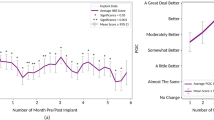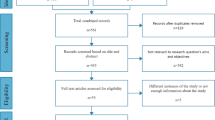Abstract
Pain is caused by particular nerve fibers that transmit impulses to the brain, where they are interpreted. Pain has a multidimensional nature, making it hard to decipher, because of its subjectivity. Chronic or recurring pain is a common impairment among the elderly, significantly bringing down their quality of life. Assessment and treatment of pain are critical challenges in providing interventions for a variety of illnesses, especially because their origins are closely related to deep rooted issues. There is a rising interest in finding objective, nonverbal methods to quantify pain in people who are unable to self-report discomfort, such as those suffering from dementia or those in a minimally conscious state. Though, self and subjective reports are the common means of measuring the impact of pain and assessing its intensity, studies suggest that there are multiple sensory means through which a cumulative and concise data on occurrence of pain (tonic or phasic) can be retrieved, such as, through HRV (Heart Rate Variation), EEG/ECG/EMG readings and health performance metrics based on everyday activities. Our project aims to utilize the space of sensory technologies, with a focus on EEG data and IoT to conduct pain assessments with the help of machine learning techniques and explore IR therapy as well as electrical stimulation in subjects that experience chronic pain. Our intervention in pain assessment looks to combine subjective reporting and sensor based crucial data points on occurrence of pain to derive a reliable method of pain reporting.
Access this chapter
Tax calculation will be finalised at checkout
Purchases are for personal use only
Similar content being viewed by others
References
Werner P, Lopez-Martinez D, Walter S, Al-Hamadi A, Gruss S, Picard RW (2022) Automatic. IEEE Trans Affect Comput 13(1):530–552
Cordell WH et al (2002) The high prevalence of pain in emergency medical care. Am J Emerg Med 20(3)
Hjermstad MJ, Fayers PM, Haugen DF, Caraceni A, Hanks GW, Loge JH, Fainsinger R, Aass N, Kaasa S (2011) Studies comparing numerical rating scales, verbal rating scales, and visual analogue scales for assessment of pain intensity in adults: a systematic literature review. J Pain Sympt Manag 41(Issue 6):1073–1093
Chen J et al (2013) Learning person-specific models for facial expression and action unit recognition. Pattern Recognit Lett 34(15)
Neshov N, Manolova A (2015) Pain detection from facial characteristics using supervised descent method. In: International conference on intelligent data acquisition and advanced computing systems
Rathee N, Ganotra D (2015) A novel approach for pain intensity detection based on facial feature deformations. J Vis Commun Image Represent 33
Chen AC, Rappelsberger P (1994) Brain and human pain: topographic EEG amplitude and coherence mapping. Brain Topogr 7(2):129–140
Heathers JA (2012) Sympathovagal balance from heart rate variability: an obituary. Exp Physiol 97(4):556–556
Apfelbaum JL, Chen C, Mehta SS, Gan TJ (2003) Postoperative pain experience: results from a national survey suggest postoperative pain continues to be undermanaged. Anesth Analg 97(2):534–540
Streff A, Kuehl LK, Michaux G, Anton F (2010) Differential physiological effects during tonic painful hand immersion tests using hot and ice water. Eur J Pain 14(3):266–272
Chuang CC, Chung WY, Shu C, Chen MW (2007) Pain assessment in musculoskeletal pain patients by heart rate variability. J Musculoskelet Pain 15(4):67–74
Shetty SH, Shetty S, Singh C, Rao A (2022) Supervised machine learning: algorithms and applications. In: Fundamentals and methods of machine and deep learning: algorithms, tools and applications, pp 1–16
Author information
Authors and Affiliations
Corresponding author
Editor information
Editors and Affiliations
Rights and permissions
Copyright information
© 2024 The Author(s), under exclusive license to Springer Nature Singapore Pte Ltd.
About this paper
Cite this paper
Hiremath, G. et al. (2024). Prediction of Chronic Pain Onset in Patients Experiencing Tonic Pain: A Survey. In: Kalya, S., Kulkarni, M., Bhat, S. (eds) Advances in VLSI, Signal Processing, Power Electronics, IoT, Communication and Embedded Systems. VSPICE 2022. Lecture Notes in Electrical Engineering, vol 1062. Springer, Singapore. https://doi.org/10.1007/978-981-99-4444-6_24
Download citation
DOI: https://doi.org/10.1007/978-981-99-4444-6_24
Published:
Publisher Name: Springer, Singapore
Print ISBN: 978-981-99-4443-9
Online ISBN: 978-981-99-4444-6
eBook Packages: EngineeringEngineering (R0)




